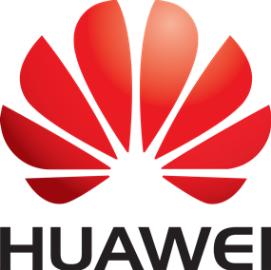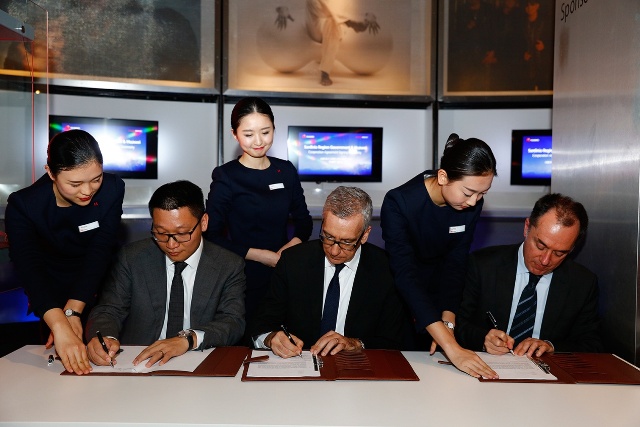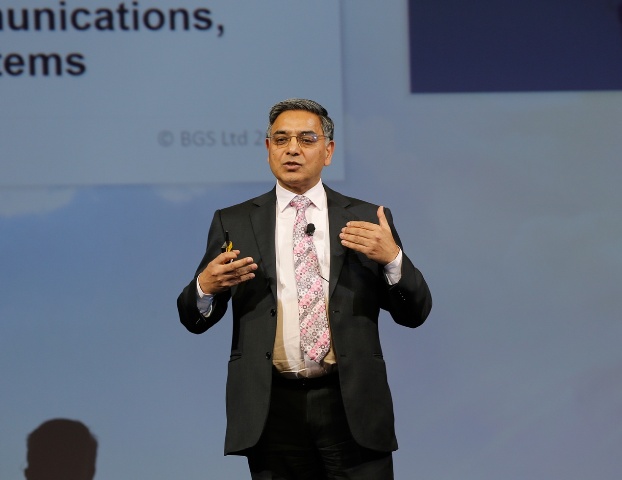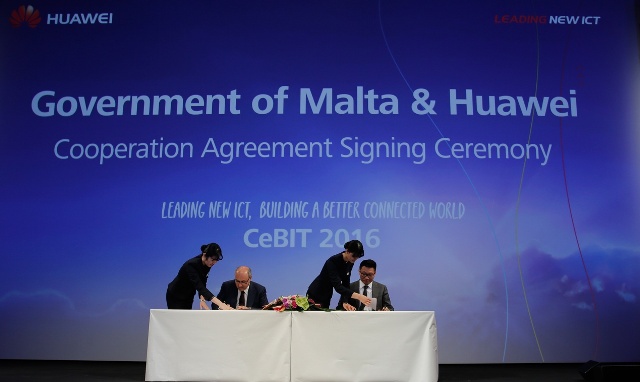
Germany: CeBIT 2016, Huawei hosted its Global Safe City Summit 2016 under the theme of “Leading New ICT, Making Cities Safer” on March 15, 2016. The Summit brought together customers from Europe, Southeast Asia, and Africa, as well as industry analysts and partners, such as Hexagon, to exchange views on public safety and leveraging innovative ICT to make cities safer and smarter. At the summit, Huawei also signed Smart City project agreement with Malta and Autonomous Region of Sardinia, Italy.
Urban safety plays a vital role in protecting people’s lives and property, and is the cornerstone of economic growth in modern cities. To make cities smarter and safer, city administrators are turning to innovative ICT to prevent and react to evolving threats. “New ICT technologies including the Internet of Things (IoT), Mobile Broadband, Cloud Computing, Big Data, and Big Video, are connecting environment, transportation, energy, electric power, finance, and manufacturing systems in cities. They are not only enabling the connection between networks and information, but also the connection between objects, between people and objects, and between people and ideas. These connections help cities build comprehensive protection systems, prevent incidents before they occur, and implement rapid, accurate decision-making through interdepartmental collaboration.” said Mr. Yan Lida, President of Enterprise Business Group, Huawei, in his speech.
Huawei Signs Smart City Project agreement with Melta and Autonomous Region of Sardinia
Mr. Edward Chan, CEO of Huawei Italy, signed a Smart City project agreement with Mr. Jose Herrera, Parliamentary Secretary for Competitiveness and Economic Growth of Malta, at the summit. Mr. Chan signed another Smart City project agreement with Mr. Francesco Pigliaru, President of the Autonomous Region of Sardinia in Italy, and Mr. Luigi Filippini, President of CRS4, later in the evening.

Huawei, the Government of the Autonomous Region of Sardinia and CRS4 signed a safe city cooperation agreement.
Leading New ICT, Making Cities Safer
Mr. Thomas Lynch, Associate Director for IHS Critical Communications Group, delivered a keynote speech themed “Public Security and Safe City”. Mr. Lynch shared insights into how public safety is a comprehensive system that integrates video surveillance, voice dispatching, Computer-Aided Dispatch (CAD), Geographic Information System (GIS), and call-taking and dispatching systems to enable threat awareness, early warning, and incident management throughout the whole process. According to a recent survey, the market value of public safety will reach USD 6.5 billion in 2016.
Based on customers’ requirements, together with partners, Huawei showcased a range of smart Safe City solutions, including the world’s first visualized collaborative command and dispatching system, the industry’s first 4G-based broadband trunking solution, a global leading video cloud platform that supports data sharing across regions and departments, and business-driven Safe City ICT infrastructure. Visualization and convergence are core features of Huawei’s safe city command and dispatching system.
Through a live show at the Summit, Huawei illustrated the power of innovative ICT to reduce crime and ensure city safety. Mr. Edwin Diender, Vice President of Government & Public Utility Sector of Enterprise Business Group, Huawei, demonstrated visualized operations on a GIS map including locating an alarm reporter, watching on-site videos and dispatching police resources. Mr. Diender also showed how videos can be shared between private and public networks, and converged conferences held across various departments and systems. Attendees gained valuable insights into Huawei’s core technologies that enhance public safety such as efficient video compression and retrieval as well as clear monitoring of targets under surveillance.
Building Open, Win-win, New Ecosystem with Customers and Partners
Huawei provides leading ICT safe city solutions based on customers’ business requirements. Huawei’s Safe City solutions have been widely deployed across the world, assists governments leading New ICT. Dr. Amanat Hussain, Chief Operation Officer for BGS and the consultant of Kenya’s Safe City project, shared best practices at the Summit. In his keynote speech, Dr. Hussain highlighted that public safety is a global concern. Economic capability, technical development, urbanization, and safety threats are key factors that influence safety conditions in cities. Outdated infrastructure and complex service processes had reduced emergency response efficiency in Kenya. To address the challenges, the Kenyan government embarked on a technology enabled transformation program using Huawei’s leading ICT technologies to achieve better information sharing, decision-making, and emergency response.

Dr. Amanat Hussain, Chief Operation Officer for BGS and the consultant of Kenya’s Safe City project, presented at the summit.
As part of the Safe City project, Huawei helped Kenya deploy a holistic solution that integrated a call-taking and dispatching system, eLTE broadband trunking, video surveillance, and intelligent analysis (license plate recognition and violation detection) to improve Kenya’s critical incident management and crisis management capabilities. The solution was used to successfully manage Pope Francis’ visit to Kenya on November 26, 2015. Since its deployment and operation, the Safe City solution has drastically improved safety conditions in the country. According to an annual report from Kenyan police, crime has decreased by 46% in the areas covered by the Safe City solution.
To advance Safe City development and deployment, Huawei collaborates with leading industry partners to build an open, win-win ecosystem. For example, Huawei cooperated with Hexagon, a geospatial application software leader, to provide customers with a holistic Safe City solution. Mr. Rodney Gill, Projects Director of Hexagon Ventures, also made a keynote speech at the Summit. According to Mr. Gill, “Hexagon’s real-time 5D GIS efficiently collects, processes, and manages geospatial data in cities. By working with Huawei’s leading ICT platform, we can develop a rich portfolio of solutions, including Smart Grid, Smart Transport, and Safe City, to help government agencies manage cities in intelligent, efficient, visible, secure ways.”
By embracing a strategy of “being integrated”, Huawei has formed significant partnerships that accelerate the development and adoption of Safe Cities. In the ICT field, Huawei has more than 100 partners, over 550 certified service partners, and over 120 authorized service partners across the globe. A new Safe City ecosystem has emerged across Huawei and a wide range of partners, including consulting firms (BGS and Accenture), system integrators (Safaricom and Tyco), and software vendors (Hexagon, Milestone, SAP, iOmniscient, PROMAD, and Agent Vi). In line with its strategy of Business-Driven ICT Infrastructure (BDII), Huawei provides a comprehensive, open, and compatible ICT platform to simplify the integration with third-party systems. To date, Huawei’s Safe City solutions have served more than 400 million people in 100 cities across 30 countries.


 Comment
Comment By Konnect Worldwide
By Konnect Worldwide
